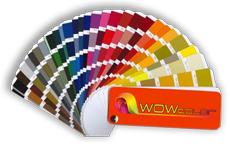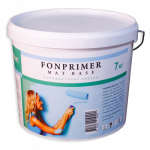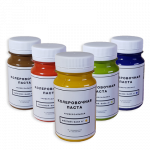Creama Bianco Stucco Veneziano



Price: 3400 rubl.
Package: 7 kilos.
Price: 8000 rubl.
Package: 20 kilos.
+ additional 5% discount when ordering from 50,000 rubles
+ additional 15% discount when ordering from 100,000 rubles
+ additional 20% discount when ordering from 200,000 rubles
Get a 50% discount on dealership terms
Short description
Average material usage:
Also purchases this product:
CREAMA BIANCO STUCCO VENEZIANO decorative finish
Many historical regions of Italy (like Venice and other) are known for using the ancient-roman wall-decoration technology. The marble dust, which had been left behind the excavation of the marble mines, was used in it. On one hand, the utilization of the marble dust-based plaster was much less expensive than the use of marble itself; on the other – the plaster itself is much more soft and versatile material than the marble.
The technology of STUCCO VENEZIANO decorative plaster application is quite effort-demanding; the material is applied in several thin layers (2 to 12, and even more), gets mixed with additional colorants to gain the stone-veins effect; often polishing is needed as the final step of the process. However, these difficulties are compensated by truly countless options of the artistic application; the interiors are rich-looking, sometimes even luxurious. The large number of layers of CREAMA BIANCO makes the surface visually deeper, creates the shimmering effect if the lights are set up in the correct way.
CREAMA BIANCO technical features
There are some technical features of CREAMA BIANCO that need to be emphasized.
Firstly, the material is made of clean raw-stuff; therefore it is eco-friendly.
Secondly, it is totally odorless; therefore it is suitable for living quarters.
Thirdly, CREAMA BIANCO STUCCO VENEZIANO is permeable to vapor. It allows the surfaces, which are covered with it, to “breathe”. Also, you can use this material in wide range of interiors – from the bathroom to the hotel reception. It’s also important to note this material’s high endurance to the surrounding environment, e.g. light, above the normal humidity.
Most often the surfaces with Venetian plaster are being polished in order to imitate the highest grades of polished marble. The future owners of the commodity are definitely going to intend to protect the expensive and luxurious-looking interior. Any sorts of additional varnishes and waxes naturally create a new layer. This layer protects the decoration, besides its main functions (toning and glazing), of course.
It’s not recommended to use this “tender” material for the decoration of publicly attended places where people might contact the surfaces (corridors, reception halls, waiting desks, negotiation rooms). The recommendation is to use the Venetian plaster as a decorative element, which is intended to underline other details of interior. Of course, it should not be used in kids’ playrooms and institutions.
CREAMA BIANCO STUCCO VENEZIANO application techniques
As it happens everywhere else, the preliminary measures needed before applying the CREAMA BIANCO Venetian decorative plaster, are fundamentally important. The surface is being cleaned and degreased. Having that done, the small-faction primer (FONPRIMER) is applied; it actively decreases the porosity of the surface. It’s recommended to use ECOPRIME liquid primer for fine-pored surfaces, which increases the lifetime of the Venetian finish.
You can carry out the tinting by yourself as well as there is an option of using the paint tinting machine. In the second option is available, you can preliminary chose the color from the catalogue, and the tinting is done automatically by the machine. In any case, it’s important to perform the calculation of the needed amount of STUCCO VENEZIANO; else you are bound to repeat this step.
Now, when you’re all set, the surface is even and dry, the material is tinted, you can get to the application of CREAMA BIANCO. It’s strongly recommended to use only high-quality instrument. In our case when you are working with Venetian decorative plaster you’ll need a stainless-steel trowel with rounded edges. Upon professional’s discretion the spatula can be also used. The application of a large number of layers and the time for their complete drying imply the time-consuming nature of this process. Possess yourself, be patient.
Application technique #1
The classic application technique of CREAMA BIANCO Venetian plaster is used to create the imitation of various sorts of natural marble and other popular types of decorative stone, e.g. onyx or malachite. The material is tinted en-masse and is applied in a number (usually, 3 to 5) of layers. The special feature of this technique presumes that the layers are being applied with chaotic movements, the stroke direction varies, imitating different sorts of marble. The final step contains of fine polishing or covering with LuxDeco tinting varnish.
Application technique #2
If interior designer’s intent is to imitate the sort of the marble, which contains differently colored layers, then the layers of CREAMA BIANCO decorative plaster are being tinted correspondingly. The movements of instrument are to be directional. In this case the dried surface is polished or covered with LuxDeco tinting varnish.
Application technique #3
This technique is most technologically complex. It is used when the designer’s intent is to imitate the sorts of marble, which contain so-called veins or other rock types’ inclusions. The variety of colors is achieved the same way as described above (Application technique #2). The veins- and inclusions-effect is created by additional use of aerograph, used for drawing these elements by hand. The finishing often presumes glossy-fine polishing and covering with wax.
Naturally, it’s only a part of the techniques being used by professionals. All of them may be used as is or be combined. Besides that, the decoration of one space can be carried out not only with Venetian plaster; it can combine different types of plaster, different materials, interior elements, different lighting to emphasize some and move others to background. Venetian plaster can be a bright spot underlining such elements as columns, arcs, act as a background for candlesticks and chandeliers. The final solution is only limited by the designer’s creative ability.
CREAMA BIANCO STUCCO VENEZIANO use for marble imitation
Each and every one of us is striving to turn our homes in a truly cozy and warm place for the family. To achieve this goal we decorate the interiors as shown in glossy glamorous magazines. Small details also have large importance, especially the ones made by own hands. Modern-day product range of decorative materials and technologies allows you the most luxurious interior-designs come true.
Venetian plaster is one of such. But in order to get to your goal it’s necessary to be familiar with some nuances involved in decorative plaster application technology. Having studied all application techniques used for this material and gotten acquainted with the rules of application, only in this case you can get to unimaginable results. This way you can demonstrate all the beauty of STUCCO VENEZIANO on your walls.
The plaster application process involving the Venetian plaster
Decoration specialists emphasize the fact that Venetian plaster is applied in a number of steps; each of them has its nuances and differences. The minimum number of layers is two. But most often it’s three or four layers; after applying which the plaster is covered with wax and fine-polished so it’s glossy like glass.
Base layer application
First (or base) layer needed for the Venetian plaster is responsible for the tint of the future surface. This layer is to be the background; its color should be chosen according to the intended pattern of the surface. This layer is applied with a spatula, trowel, or even a paint-roll. You need to apply all your effort in order for this layer to be as thin and even as possible.
Creation of the second layer
Decoration specialists agree this step to be the most important one in the marble-imitation technology. Since the material dries relatively fast, some professionals advise applying this layer partially, small areas at a time, rather than covering the whole surface at once. This step creates the unique pattern of the stone on the surface. For greater beauty of this layer, one can use special stamps and other instruments and rigging, such as brushes, trowels, spatulas, and rulers. Several colors separately mixed with STUCCO VENEZIANO may serve as the raw stuff for this layer; and then be mixed once again.
STUCCO VENEZIANO final layer
This step sometimes reminds us epilogue of the epic story. Water-proof wax or color enamel, pearl-effect varnish with silver or golden shade can be used as the final layer. This layer creates “life” for the whole surface. This layer covers the previous one in several hours after finishing all the construction work linked with working with sandpaper and polishing.
Waxing and varnishing of the prepared surface
Once the final layer is dry, the surfaced gets covered with wax or varnish.
The selection of technique depends directly on the decorative plaster application tasks solved by the worker. As a result of using Venetian plaster you may want to have totally glossy, or shiny, or dim walls. Besides that, the surface can be just slightly dimmed, have velvet- or silk-feel, can have texture of unfired clay covered with PERLATO ORO golden varnish with chameleon effect.
Creama Bianco Stucco Veneziano
CREAMA BIANCO STUCCO VENEZIANO plaster with Venetian origin is a magnificent material for wall decoration. This type of plaster was created by Italian artisans, which perfected its application technology. During the Renaissance this plaster has been highly valued and in high demand by the Europeans. Venetian plaster imitates the marble on the walls, with its unique natural patterns, veins and cracks.
Special features and the components of CREAMA BIANCO
Everyone has some knowledge of decorative plaster, since it can be seen in almost any building. But with the Venetian plaster it’s not the case. Some have never heard of it, many don’t even realize it exists and the way it looks. However, this type of decorative plaster has been known since Ancient times.
You can’t be sure to tell who invented it, his or hers whereabouts. It very well may be true that the first recipe was created unintentionally. Maybe it was an accidental blend of marble dust with construction waste. When this “way-to-go” blend got some moisture on it new magnificent material has been born. Probably, just for the sake of not throwing it away, this blend has been used as a usual plaster on the wall, but the result had amazed everyone. This material was being perfected during time. Now due to acrylic bonding components, it’s become more flexible than traditional plasters. If tinted, you can get wonderful palette of colors.
CREAMA BIANCO for sale, delivery to regions of Russia
Wholesale and retail orders of Venetian plaster are welcome in online –store, door-to-door delivery available. Material is always in stock. You can take a look at a huge variety of polished marble samples in our office or on our web-site. Our staff is always happy to help you make your choice of original decorative materials with natural and synthetic components.
We offer various decorative materials manufactured by WOWCOLOR, including CREAMA BIANCO STUCCO VENEZIANO Venetian plaster which imitates natural marble. Many different structures and effects can be created with STUCCO VENEZIANO, thanks to its modern components and improved manufacturing technology.
Application technology
Application technology
CREAMA BIANCO STUCCO VENEZIANO, a truly beautiful and long-lasting plaster, leaves no handicaps for the creative talent due to its application technique. Sophisticated structures, both soft and textured with veins, can be created with the help of a brush or a blade. The technique can vary: the strokes can be made slowly and evenly or in a sharper manner; as a result you can achieve a butterfly wings effect. The decorative pattern is defined by the choice of technique.
Color interweaving effect can be achieved using a special technique. Event the bending angle of the spatula is what matters in this case, just as other things like use of tinting pigments, varnishes and paints.
Natural minerals are some of the components of Venetian plaster, so that sort of rustic masonry can be used to create an effect of marble lumps. Some training and fantasy is needed to perform such works. CREAMA BIANCO decorative plaster is usually applied in 3 layers, but from time to time 4 or even 6 are needed.
CREAMA BIANCO application options
First step involves thorough cleaning and degreasing the surface, removing all dust. After that the base layer of primer can be applied. The first layer of primer should contain about 15-20% of water, the second one – about 20 to 30%.
This solution is being applied with a stainless-steel trowel. You should avoid applying the decorative plaster under direct sunlight. CREAMA BIANCO is applied on a homogenous appropriately prepared surface.
The first layer is distributed homogenously all over the surface. The second layer is applied after drying of the first one using the same technique. Small amount of plaster is picked with the trowel; it’s applied onto the surface with pressure.
Venetian plaster can be applied using various techniques; the choice only depends on the worker. In order for the surface to have additional depth and transparency effect you’d only need 3 to 6 layers of the plaster. Each layers should be half-transparent, its thickness should be circa 1 mm.
The tint of the future pattern depends on the first layer, which is applied on the surface of the wall with a rectangular spatula made of stainless steel. The first layer should be dense and even. In about 8 hours, when the first layer gets dry enough, you should polish it with sandpaper in order to remove minor flaws of the surface.
Every other layer is considered to play a decorative role; each next one is applied in 2 hour interval after the preceding one. You should use spatulas of different sizes and shapes. Each layer must get fully dry, and then you should use fine-grain sandpaper on it. Only after that should you get to the next layer. The depth of the “shine” is defined by the number of layers.
The “Travertino” technique gives you an effect of old marble imitation. Such effect is created via making some grooves on the plaster and scratching the second layer once it’s dry. These technological operations are implemented with an edge of the trowel. Trowel is also used afterwards for evening out the plaster and for creating the gloss. It’s up to the designer to divide the surface into rectangles which imitate the marble blocks. In addition you can use wax and pearl varnish to cover the Venetian plaster.
How is Venetian plaster tinted?
Tinting or pigmentation (professional term) is the process of adding the tinting water-based pigment to the initial white mixed, which is ready for use. This solution is being mixed with a machine. As a result you get homogenous material with desired color. Nevertheless, there might be some unwanted shades on the surface. The reason is that the Venetian plaster is transparent to some extent. Layer-after-layer application with the following application of force by the spatula and polishing create a shimmering of light and depth effect of noble marble, is seems as if the layers shine through the other. You should only pick the needed color for CREAMA BIANCO once, and then write the proportion down for the future. Once you need the chosen color, just mix the pigments with the base material according to the proportion from your previous records.
The colors can be chosen from the whole available palette (more than 100 thousand colors and shades). Plaster and paint are easy to be tinted. It’s common to use special additional materials, durable to fading out under the bright light, resistant to low temperatures, moisture and precipitation. The tinting is only carried out manually if the worker is skilled and experienced. The color is chosen first, the main color formula is created, needed pigments are picked, appropriate amount of pigments is calculated, and then the components are mixed together. The special shaker is used for a specific amount of time in order for the mixture to become homogenous. The sample for the customer’s confirmation is made. After the confirmation of the base color and shade, the surfaced is being painted, controlling the work with the confirmed sample.
Advantages of Venetian plaster
Decorative Venetian plaster has special attractiveness. It has semi-transparent structure; each of its layers shines through the succeeding one, making the impression of the natural stone’s depth. The beauty grows even more massive once the protective wax is applied. Experienced designers are pros at decorative effects. The application of the plaster is complicated and a time-consuming process; therefore it’s often for the cost of the application to be higher than the cost of the material used. But as a result the interior acquires the prestigious and noble palace-like appearance.
The pigmentation and texturization of the plaster lets you created unique pieces of art. It’s highly probable the interior of the palace to be unique, even if the designers had no intention of copying the decoration of well-known ancient buildings or neighborhood houses.
One can create various authentic multicolored patterns with substantial depth. They are not harmed as easy as the ones drawn on the surface; they are not subject to the threat of small scratches. The individualism of design is achieved, the owner can express his or hers feelings and thrives in interior decorations.
Decorative plaster can be used both inner and outer sides of the walls of the building. The customers desire is important here. Venetian plaster is the best way to decorate the building, which would remind the descendants of the predecessors’ great intentions and good artistic taste. Beautiful house is nice to live in, you can show it to your guests too. The palace with decoration so superb doesn’t leave any trace of a doubt about the host’s solidity and wealth.





































































































































